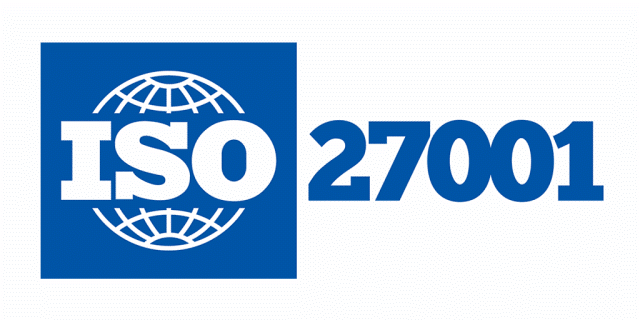
Providing a Complete Suite of IT Solutions

Information Security
Information security, sometimes shortened to infosec, is the practice of protecting information by mitigating information risks. It is part of information risk management. It typically involves preventing or at least reducing the probability of unauthorized/inappropriate access, use, disclosure, disruption, deletion/destruction, corruption, modification, inspection, recording or devaluation, although it may also involve reducing the adverse impacts of incidents.
How confident are you in your organization’s security posture?
If your answer isn’t 100%, you’re not alone. Most organizations aren’t doing enough to protect their data.
The cyber threat landscape is constantly evolving, which makes protecting against malicious attacks extremely challenging.
That's where ISO 27001 comes in..........
Click to the left to learn how to Protect against the most critical cyber risks with ISO 27001 implementation and certification.
Achieve and maintain an effective security posture by identifying your greatest risks and weaknesses—before malicious outsiders can take advantage of them. Your network has thousands of potential entry points and ISO 27001 will shorten and simplify remediation across your network, web, mobile, virtual, and IoT infrastructure to improve your security posture and increase operational efficiency.
Cyber Security considerations
Information security threats come in many different forms. Some of the most common threats today are software attacks, theft of intellectual property, identity theft, theft of equipment or information, sabotage, and information extortion. Most people have experienced software attacks of some sort. Viruses, worms, phishing attacks and Trojan horses are a few common examples of software attacks. The theft of intellectual property has also been an extensive issue for many businesses in the information technology (IT) field. Identity theft is the attempt to act as someone else usually to obtain that person's personal information or to take advantage of their access to vital information through social engineering. Theft of equipment or information is becoming more prevalent today due to the fact that most devices today are mobile, are prone to theft and have also become far more desirable as the amount of data capacity increases. Sabotage usually consists of the destruction of an organization's website in an attempt to cause loss of confidence on the part of its customers. Information extortion consists of theft of a company's property or information as an attempt to receive a payment in exchange for returning the information or property back to its owner, as with ransomware. There are many ways to help protect yourself from some of these attacks but one of the most functional precautions is conduct periodical user awareness. The number one threat to any organisation are users or internal employees, they are also called insider threats.
Consider ISO Certification to protect the framework of Information Management Systems and Controls.
Most organizations have a number of information security controls. However, without an information security management system (ISMS), controls tend to be somewhat disorganized and disjointed, having been implemented often as point solutions to specific situations or simply as a matter of convention. Security controls in operation typically address certain aspects of IT or data security specifically; leaving non-IT information assets (such as paperwork and proprietary knowledge) less protected on the whole. Moreover, business continuity planning and physical security may be managed quite independently of IT or information security while Human Resources practices may make little reference to the need to define and assign information security roles and responsibilities throughout the organization.
ISO/IEC 27001 requires that management:
-
Systematically examine the organization's information security risks, taking account of the threats, vulnerabilities, and impacts;
-
Design and implement a coherent and comprehensive suite of information security controls and/or other forms of risk treatment (such as risk avoidance or risk transfer) to address those risks that are deemed unacceptable; and
-
Adopt an overarching management process to ensure that the information security controls continue to meet the organization's information security needs on an ongoing basis.
ISO 27001 – Information & Data Security
Data is one of the most valuable assets any business has today. Our dependence on information systems and services means organisations are more vulnerable to security threats than ever before. Keeping your data secure – whether its customer, staff or supplier data – is critical in most businesses, but most especially those dealing with sensitive data. Data security is a hot topic in the media so ISO 27001 not only protects your business against hackers but also safeguards your reputation.
What is ISO 27001?
ISO 27001 sets out the requirements of information security management systems. It is part of the ISO 27000 family of standards relating to information and cyber security and offers a comprehensive set of controls, based on best practice in information security. Similar to the other management standards, it is suitable for organisations of all sizes. 70% of small businesses believe they are not a target for any data theft or misuse; it is a problem for either larger businesses or only those in the financial sector – this is simply not true. Any business holding data on individuals or companies can be a target for fraud, theft, misuse or abuse, resulting in a long lasting loss of reputation and if a company’s systems are found negligent at keeping data secure, then it can result in prosecution. Every business believes they have insurance to cover eventualities such as fraud and theft, but they don’t realise they also owe a duty of care which if not exercised can lead to any insurance claim being declined.




